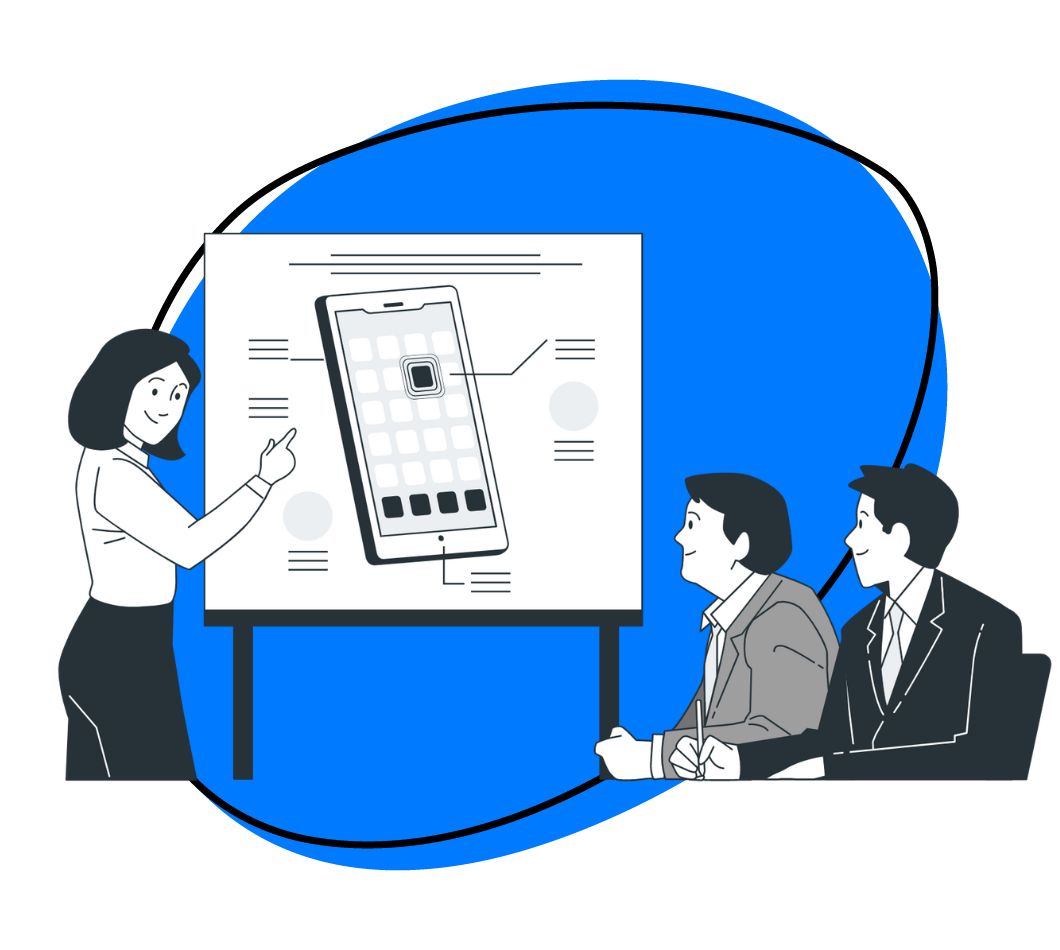NPS, or your Net Promoter Score is a gold mine.
It is a measurement of customer loyalty, based on the question, “On a scale of 1-10, how likely are you to recommend this product?” If the responses are 9 or 10, the customer is a promoter, meaning they would actively tell others about you and encourage them to use your service.
Detractors, on the other hand, give you a score between 0-6. This means they would not give you a favorable recommendation.
Your NPS score is calculated by subtracting the number of detractors from your promoters and then dividing that number by the total responses.
And although NPS is an easy data point to get from your customers, what you choose to do with it (and get out of it) is a much more difficult task. It provides an opportunity to thank and encourage your promoters, or figure out how to turn a negative experience into a positive one.
What do other companies do with this information? We set out and asked 5 Customer Success professionals how they use their NPS score to drive customer engagements and outcomes. They have great insights and there is plenty to learn!
Kaitlin Rust | Enterprise Customer Success Manager at Clickup
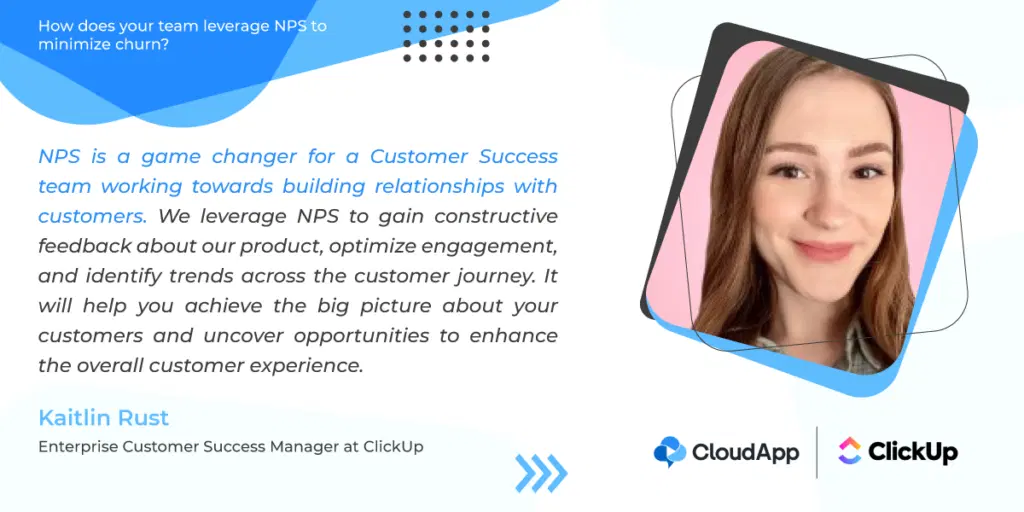
“Making your customers feel heard is essential for any company trying to grow customer loyalty. NPS is a game-changer for a Customer Success team working towards building relationships with customers. We leverage NPS to gain constructive feedback about our product, optimize engagement, and identify trends across the customer journey. It will help you achieve the big picture about your customers and uncover opportunities to enhance the overall customer experience.”
Chitra Madhwacharyula | Director, Customer Success at Couchbase
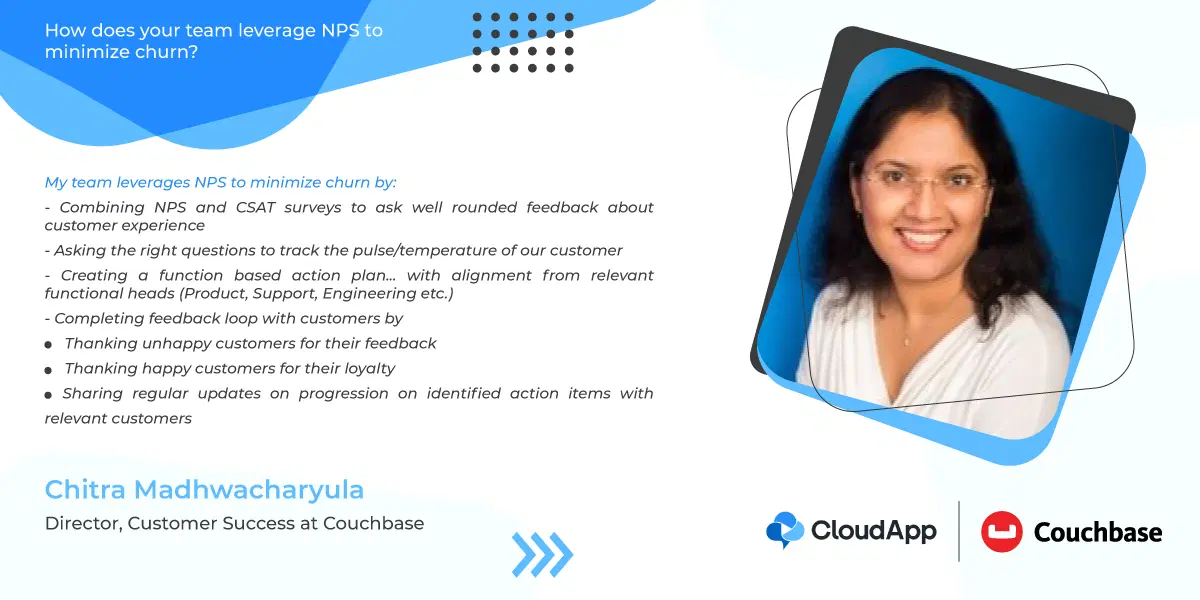
My team leverages NPS to minimize churn by
- Combining NPS and CSAT surveys to ask for well-rounded feedback about customer experience with our products and services
- Asking the right questions to track the pulse/temperature of our customer base to identify patterns and themes for what we are doing well and where we need to improve
- Creating a function-based action plan based on findings from customer feedback analysis with alignment from relevant functional heads (Product, Support, Engineering, etc.)
- Completing feedback loop with customers by
- Thanking unhappy customers for their feedback and providing them actionable next steps on their grievances
- Thanking happy customers for their loyalty and partnership and requesting referrals/testimonials
- Sharing regular updates on progression on identified action items with relevant customers
Christopher Brown | Director of Customer Success at Fulcrum
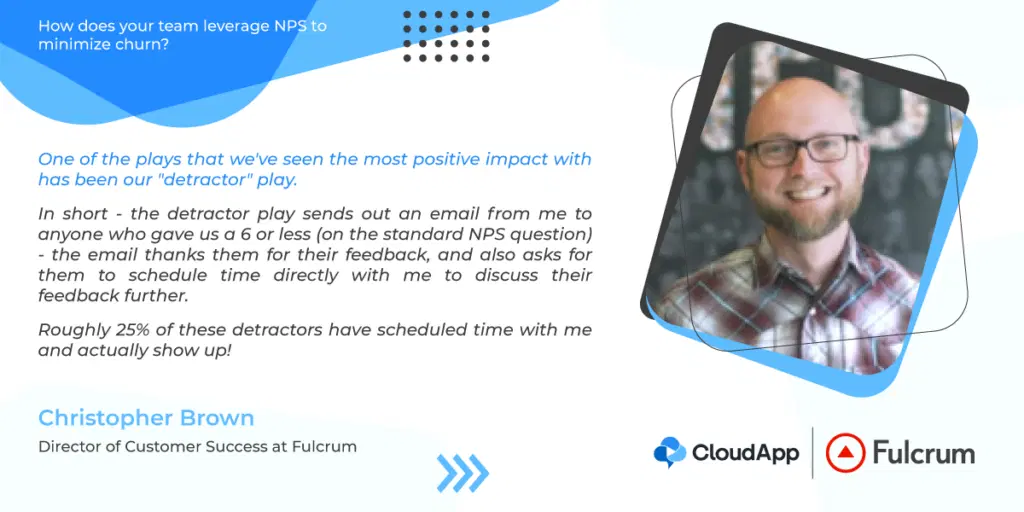
At Fulcrum we have most of our NPS plays automated to ensure that nothing is falling through the cracks.
One of the plays that we’ve seen the most positive impact with has been our “detractor” play. It’s rather simple, but sometimes the best plays are 🙂
In short – the detractor play sends out an email from me to anyone who gave us a 6 or less (on the standard NPS question) – the email thanks them for their feedback, and also asks for them to schedule time directly with me to discuss their feedback further.
Roughly 25% of these detractors have scheduled time with me and actually show up!
Though listening to their feedback, genuinely thanking them, and in many cases resolving their major issues ON THE CALL we have been able to turn around almost ALL of the customers we speak with. Time will tell if their score improves next time we survey them, but the important thing is that the customer felt heard, and appreciated an actual conversation.
Hiram Damin | Head of Customer Success at APIPASS
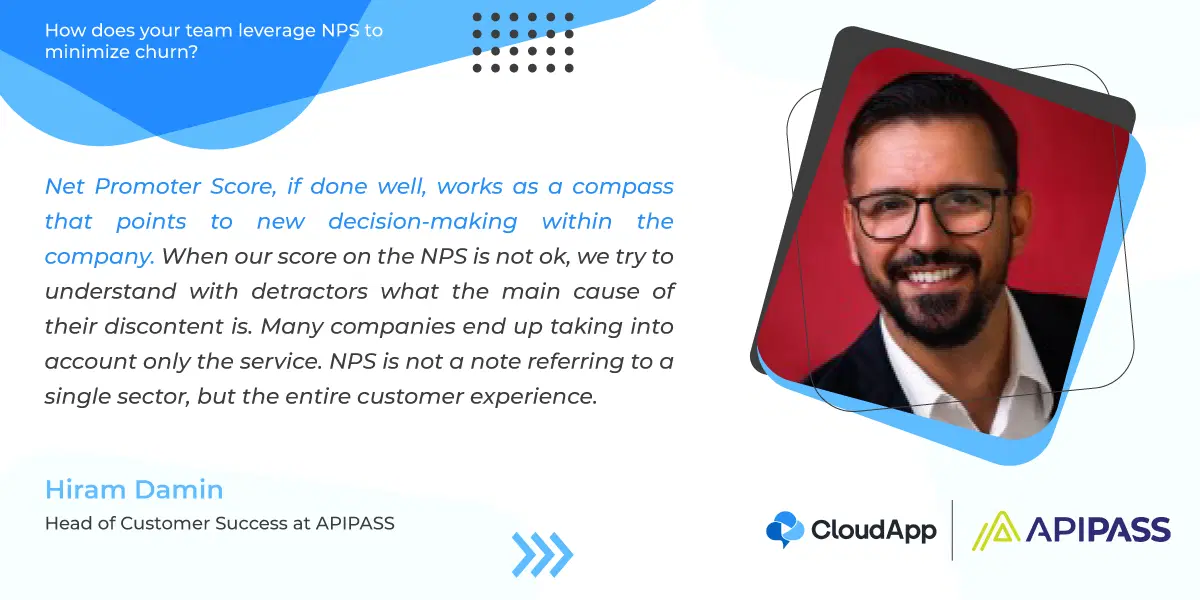
Net Promoter Score, if done well, works as a compass that points to new decision-making within the company.
When our score on the NPS is not ok, we try to understand with detractors what the main cause of their discontent is. Many companies end up taking into account only the service. NPS is not a note referring to a single sector, but the entire customer experience. And believe me, even marketing campaigns can be putting your NPS down if they create an expectation that will not be met after sales.
Kia Puhm | CEO & Founder, DesiredPath
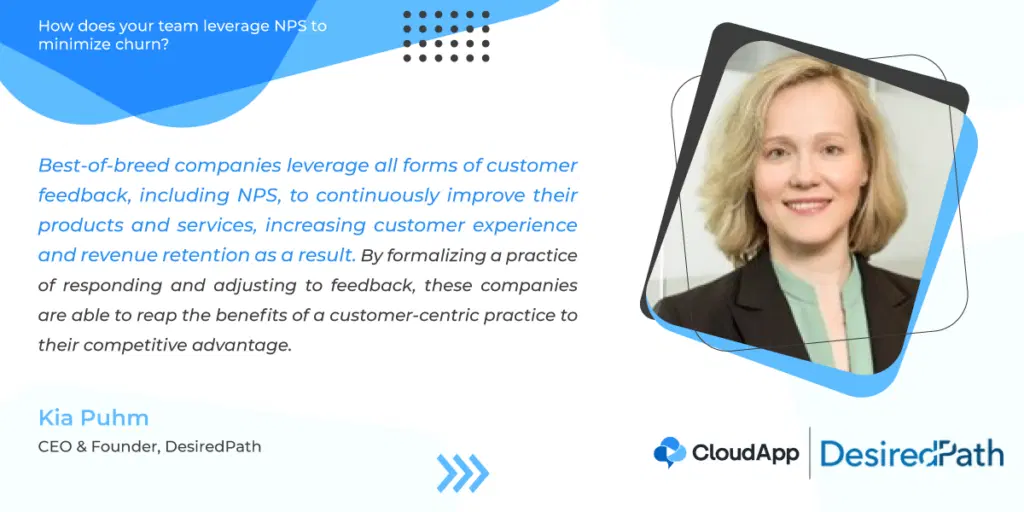
Best-of-breed companies leverage all forms of customer feedback, including NPS, to continuously improve their products and services, increasing customer experience and revenue retention as a result. By formalizing a practice of responding and adjusting to feedback, these companies are able to reap the benefits of a customer-centric practice to their competitive advantage.
NPS Is An Opportunity
If your company utilizes NPS, treat responses like gold. Whether they were detractors or promoters, they cared enough to give you feedback about your product, which means you have the opportunity to make a positive experience.
You can start simple, a follow-up email is an easy tactic to implement (and was suggested by our panel!). But you don’t have to stop there, use some creativity, collaborate with marketing to see if any creative ideas can be used to further delight your customers.
